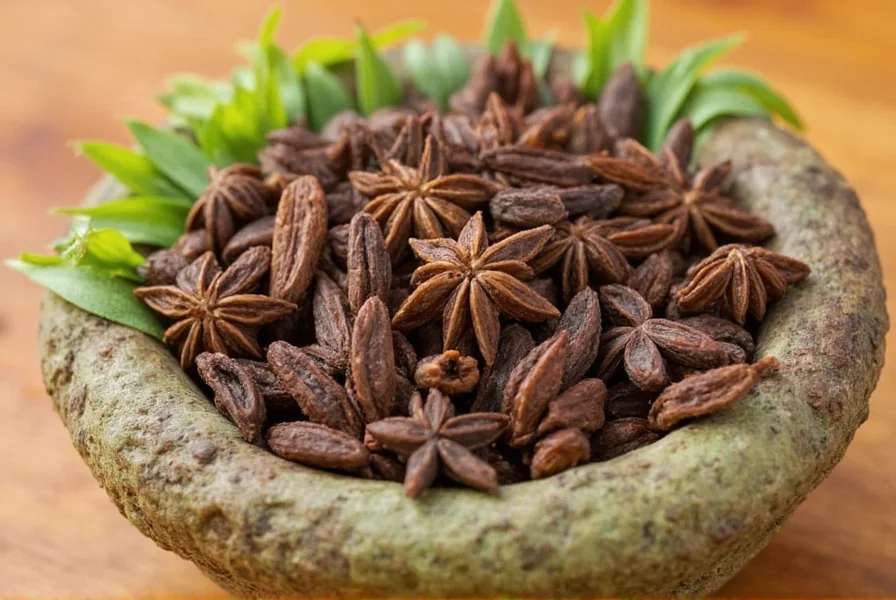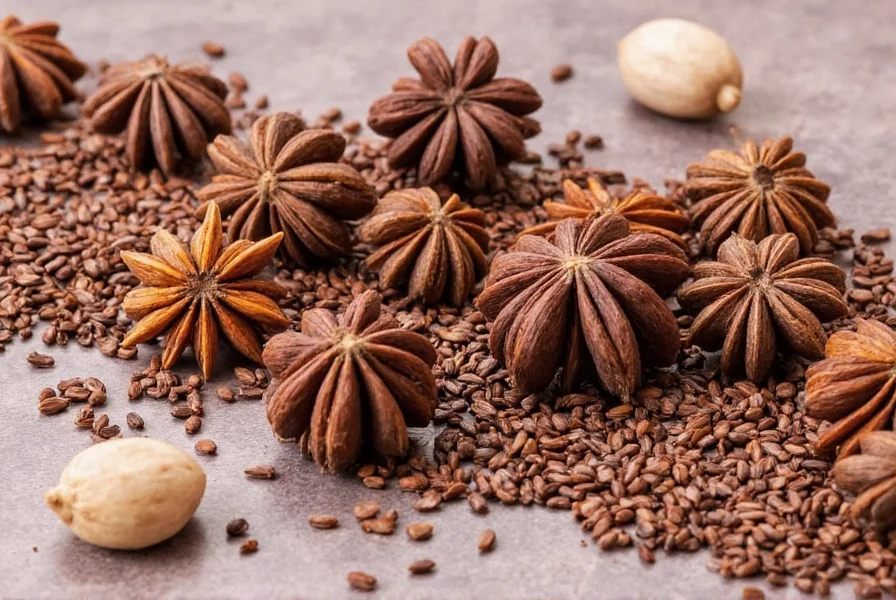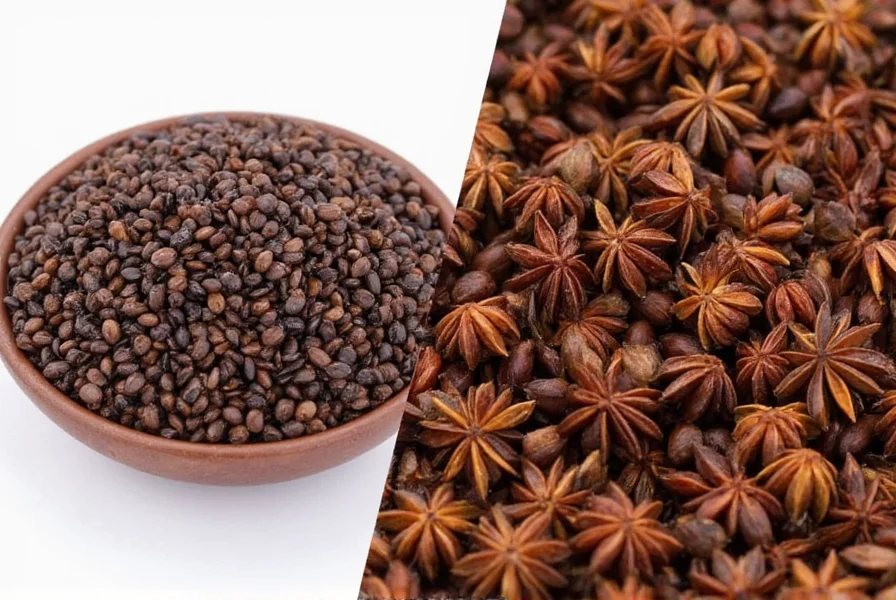When exploring the world of aromatic spices, few comparisons cause as much confusion as anise seed versus star anise. Both deliver that distinctive licorice flavor, but understanding their fundamental differences is crucial for culinary success. Let's examine these two spices in detail to help you use them correctly in your cooking.
Botanical Origins and Physical Characteristics
Anise seed, scientifically known as Pimpinella anisum, comes from a flowering plant in the Apiaceae family (the same family as parsley, carrots, and celery). These small, grayish-brown seeds measure about 3-4mm in length and have a crescent shape with a single ridge running down the middle.

Star anise, Illicium verum, is actually the fruit of a small evergreen tree native to Southwest China and Northeast Vietnam. Each fruit consists of 6-8 pointed carpels arranged in a distinctive star shape, typically 2.5-4cm across. The entire star is used as a spice, though sometimes it's ground into powder.
Flavor Profile Comparison
While both spices share a licorice-like flavor due to the compound anethole, their taste experiences differ significantly:
| Characteristic | Anise Seed | Star Anise |
|---|---|---|
| Primary Flavor Compound | Anethole (80-90%) | Anethole (80-95%) |
| Flavor Intensity | Milder, sweeter | Stronger, more pungent |
| Additional Notes | Subtle floral, earthy undertones | Woody, slightly bitter finish |
| Heat Stability | Loses flavor quickly when cooked | Retains flavor through long cooking |
| Typical Culinary Ratio | 1:1 for fresh applications | 1 star = 1 tsp ground = 1.5 tsp anise seed |
Culinary Applications and Regional Uses
Anise seed features prominently in Mediterranean, Middle Eastern, and European cuisines. You'll find it in Italian sausage, Greek ouzo, Turkish raki, German pfeffernüsse cookies, and Middle Eastern spice blends like baharat. Its delicate flavor works well in baked goods, fish dishes, and vegetable preparations where a subtle licorice note is desired.
Star anise dominates in Asian cooking, particularly Chinese five-spice powder, Vietnamese pho broth, and Indian garam masala. Its robust flavor withstands long cooking times, making it ideal for braises, stews, and simmered dishes. In Chinese medicine, star anise is also used for digestive purposes, though this should not be confused with medical advice.
Substitution Guidelines for Home Cooks
Understanding the difference between anise and star anise is essential when substituting. While they share flavor compounds, their intensity varies considerably. When considering can I substitute star anise for anise seed, follow these guidelines:
- For every 1 teaspoon of anise seeds, use approximately 1/2 star anise (about 1.5g)
- Ground star anise substitutes at a 1:1.5 ratio compared to ground anise seed
- Never substitute whole star anise for anise seeds in baking recipes
- Remove whole star anise before serving, as the hard points are inedible
For the anise seed vs star anise flavor profile question, remember that star anise delivers a more intense, longer-lasting flavor that can overwhelm delicate dishes if used improperly. Anise seed provides a more subtle, sweeter note that works better in quick-cooking applications.
Nutritional and Safety Considerations
Both spices contain beneficial compounds, though their nutritional profiles differ. Anise seed contains more iron and manganese, while star anise has higher levels of certain antioxidants. Neither should be consumed in excessive quantities.
Important safety note: Japanese star anise (Illicium anisatum) is toxic and should never be confused with Chinese star anise. Always purchase from reputable spice merchants to avoid this dangerous substitution. The culinary uses of anise seed and star anise are safe when used in normal food quantities, but medicinal applications require professional guidance.

Storage Recommendations
To maintain optimal flavor for both spices:
- Store in airtight containers away from light and heat
- Whole spices retain flavor longer than ground versions
- Star anise keeps well for 2-3 years when properly stored
- Anise seeds maintain quality for 1.5-2 years
- Check for aroma before using - diminished scent indicates lost potency
Common Misconceptions Clarified
Many home cooks mistakenly believe these spices are interchangeable. The botanical difference anise star anise explains why they behave differently in recipes. Anise seed comes from an annual herb, while star anise is a tree fruit - this fundamental distinction affects their chemical composition beyond just the shared anethole compound.
Another frequent error involves using star anise in baking recipes that call for anise seed. The stronger flavor and different texture profile often results in overpowering, unpleasant results. When examining anise seed vs star anise health benefits, note that traditional medicinal uses differ significantly between cultures, though scientific evidence for many claims remains limited.











 浙公网安备
33010002000092号
浙公网安备
33010002000092号 浙B2-20120091-4
浙B2-20120091-4